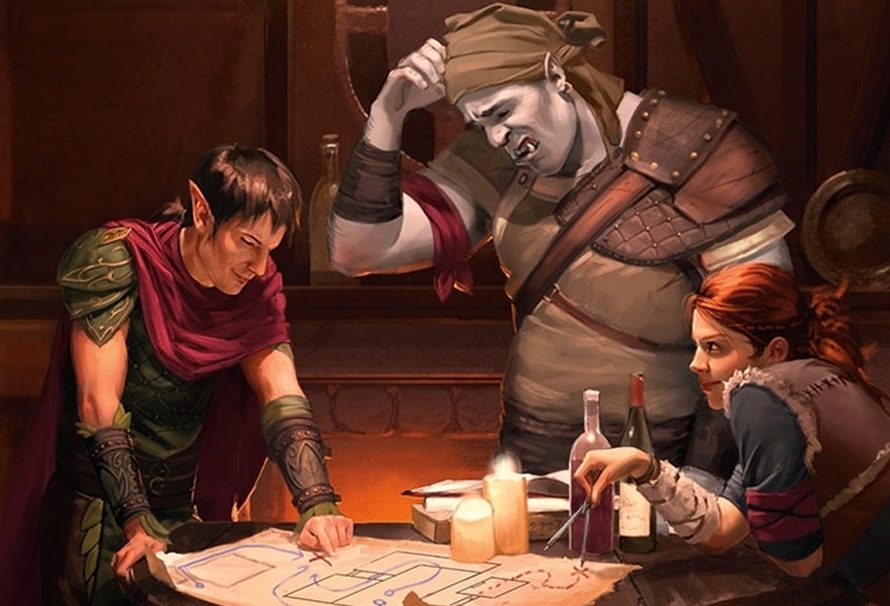
Hello, again! If you followed the tips I gave from last week’s blog, you most likely came up with a backstory for your first character.
Now, the next step is figuring out how to roleplay! It may sound intimidating at first glance, don’t worry! Here are five easy steps that you can use to help out with roleplaying!
1. Define your character’s personality, and don’t be afraid of using inspiration to do it!
When thinking about how your character should act, always look to the four characteristics shown in the Player’s Handbook: Personality Traits, Ideals, Bonds, and Flaws
Personality Traits are small and simple ways that your character stands out from others, such as habits they might do or their general manners
Ideals represent what your character believes in most strongly, such as principles that you will never betray, your philosophical beliefs, etc.
Bonds represent the connections that your character has with people, towns, or the world. Bonds are what inspires characters to rise to great, or terrible, acts. These bonds can also be used for motivations, whether it be revenge, or a desire to protect the innocent
And finally, flaws represent what is holding your character back. This can be anything someone can exploit to plot your ruin, and may even force you to act against your best interests
You don’t have to put too much into these for your first character. You can always use inspiration from a character from other sorts of media as ideas to make your character.
2. Don’t worry too much about your character’s voice.
A lot of people who play Dungeons and Dragons aren’t professional voice actors, and most likely, neither are you. As such, don’t stress out too much on what your character sounds like in terms of their voice and accent.
If you do want to do an accent, look at videos that teach how to do those accents. That way, you can come prepared when you do the voice for the first session. If that accent tires your throat, be sure to bring water.
3. Consider your character’s alignment
Alignments in D&D are a great way to help convey a character’s moral and personal attitude. Here are the nine alignments in the game:
Lawful Good: these characters can be counted on by society to do the right thing
Neutral Good: these characters do the best they can to help others according to their needs
Chaotic Good: these characters act as their conscience directs, with little regard for what others expect.
Lawful Neutral: these characters act in accordance with law, tradition, or personal codes
Neutral: these characters prefer to steer clear of moral questions and don’t take sides, doing what seems best at the time
Chaotic Neutral: these characters follow their whims, holding their personal freedom above all else
Lawful Evil: these characters methodically take what they want, within the limits of a code of tradition, loyalty, or order
Neutral Evil: these characters do whatever they can get away with, without compassion or qualms
Chaotic Evil: these characters act with arbitrary violence, spurred by their greed, hatred, or bloodlust
When making your first character, I’d highly advise you don’t pick any of the evil options. That’s a surefire way to singlehandedly ruin a campaign by working against the party. Instead, pick one of the good alignments and give it a try.
4. Consider your class
When thinking about how your character would act, look at what they are capable of on their character sheet, such as what class they are and what skills they are proficient in. Each class has their own level of expertise, and each class can also bring up great moments of roleplay.
One example includes the Warlock, a class that’s all about an individual’s shaky relationship with an otherworldly patron, whom they made a bargain with to gain power, knowledge, or both. This incredibly uneven relationship could lead to all manner of possibilities, such as the warlock regretting making the bargain, to their patron treating them like a slave
Another good example is the Paladin, a class that’s about a holy warrior who takes up a sacred oath, whether that oath be for justice, vengeance, or the light, just to name a few. Roleplay wise, a paladin could be wandering the world with the party fighting monsters, with each fight challenging their beliefs in one way or another.
5. Worst case scenario, just be yourself!
If all else fails, you can always fall back to the person you know best: yourself! This way, you won’t have to worry about being uncharacteristic of what your character might do. When making a first character, this might be the best tip you can get, so you don’t have to act embarrassed as you act weirdly, and instead acting as yourself!
